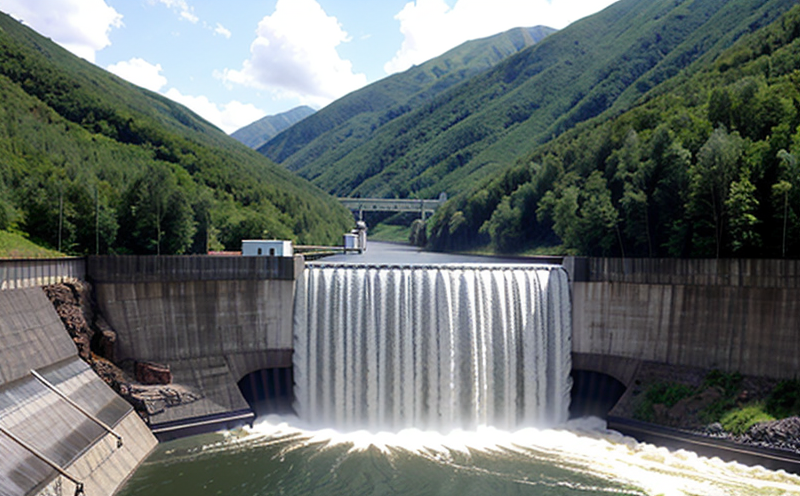ISO 1940 Rotor Balancing Testing of Hydro Turbines
The ISO 1940 standard is a cornerstone in the realm of rotor balancing testing, particularly for hydro turbine systems. This international standard provides guidelines and procedures to ensure that rotors are balanced within specified limits, which is critical to achieving optimal performance, extending the life cycle of turbines, and ensuring safety during operation.
In hydropower systems, the rotor plays a crucial role in converting mechanical energy into electrical energy. The balance of the rotor is paramount because an unbalanced rotor can lead to excessive vibrations, increased wear on bearings, and reduced efficiency. Balancing ensures that the rotor spins smoothly without unnecessary oscillations, which helps maintain the integrity of the entire turbine system.
The testing process outlined in ISO 1940 involves a series of precise measurements and adjustments to ensure that the rotor is balanced within specified tolerances. The first step is to prepare the specimen by carefully inspecting the rotor for any defects or irregularities. Once the rotor is cleaned and inspected, it undergoes balancing tests using sophisticated equipment such as force measuring devices.
The testing apparatus used in this process includes dynamic balancing machines that can measure and analyze the forces exerted on the rotor during rotation. These machines are capable of identifying imbalances at various speeds, allowing for accurate adjustments to be made. The testing process may also involve the use of vibration analyzers, which provide valuable data on the frequency and amplitude of vibrations.
The acceptance criteria for ISO 1940 balancing tests are stringent and ensure that the rotor meets specified performance standards. Rotors must pass rigorous tests at multiple speeds to ensure they operate within safe and efficient parameters under all conditions. This process not only enhances operational reliability but also ensures compliance with international safety regulations.
The importance of this testing cannot be overstated, especially in large-scale hydropower projects where the turbine rotors can weigh hundreds of tons. Ensuring that these critical components are balanced to within fractions of millimeters is essential for the long-term success and safety of hydroelectric facilities.
Real-world applications of ISO 1940 balancing tests are widespread, from small-scale local power plants to large international projects like the Three Gorges Dam in China. By adhering to this standard, engineers can ensure that turbines operate efficiently while minimizing wear and tear on critical components. This leads to reduced maintenance costs and increased operational lifespans.
Moreover, compliance with ISO 1940 is not just a technical requirement but also a strategic decision for facilities aiming to minimize downtime and maximize output. By investing in rigorous balancing tests, power plants can ensure that their equipment meets the highest international standards, thereby enhancing their reputation and operational reliability.
Applied Standards
The ISO 1940 standard is widely recognized for its comprehensive approach to rotor balancing testing. It provides detailed procedures and guidelines that are applicable to a wide range of industries, including hydropower systems. The standard is based on the principles of dynamic balance and specifies methods for measuring and adjusting imbalances in rotating components.
For hydro turbines, ISO 1940 ensures that rotors are balanced within specific limits that prevent excessive vibrations during operation. This standard covers a variety of testing scenarios, from initial balancing to periodic recalibration, ensuring that the rotor remains efficient throughout its operational life. The standard also includes recommendations for testing different types of rotors and turbines, making it versatile and applicable across various hydropower facilities.
In addition to ISO 1940, other relevant standards include EN ISO 2372, which provides general guidelines for balancing rotating machinery, and ASTM E1508, which focuses on the testing of rotating equipment. These standards complement each other in providing a comprehensive framework for ensuring rotor balance across different sectors.
The application of these standards is crucial for maintaining the integrity and efficiency of hydro turbines. By adhering to international standards like ISO 1940, facilities can ensure that their equipment meets global best practices, enhancing operational reliability and safety. Compliance with such standards also facilitates seamless integration into larger international projects and partnerships.
Why Choose This Test
Selecting ISO 1940 rotor balancing testing for your hydro turbine system is a strategic decision that offers numerous benefits. Firstly, this testing ensures that the rotors meet the highest international standards, thereby enhancing operational reliability and safety. By adhering to these stringent guidelines, facilities can minimize downtime and maximize output, leading to cost savings in the long run.
Moreover, ISO 1940 balancing tests are essential for maintaining the integrity of turbine components. These tests help identify and correct imbalances early on, preventing potential failures that could lead to costly repairs or replacements. By investing in rigorous testing, facilities can ensure that their equipment operates efficiently under all conditions.
The standard also promotes compliance with international regulations, which is crucial for facilities operating across multiple jurisdictions. Adherence to ISO 1940 ensures that your hydro turbine system meets the required standards, thereby facilitating seamless integration into larger international projects and partnerships. This not only enhances operational reliability but also boosts the reputation of the facility.
In addition to these benefits, ISO 1940 balancing tests are particularly advantageous for facilities with large-scale operations. The standard provides detailed procedures for testing different types of rotors and turbines, making it versatile and applicable across various hydropower facilities. This ensures that your equipment is balanced within specified limits, leading to improved performance and longer operational lifespans.
The use of ISO 1940 balancing tests also facilitates proactive maintenance strategies. By regularly monitoring and recalibrating the rotors, facilities can identify potential issues early on, preventing them from escalating into major problems. This proactive approach not only enhances operational reliability but also ensures that your equipment remains efficient throughout its lifecycle.
In conclusion, choosing ISO 1940 rotor balancing testing is a明智的回答





